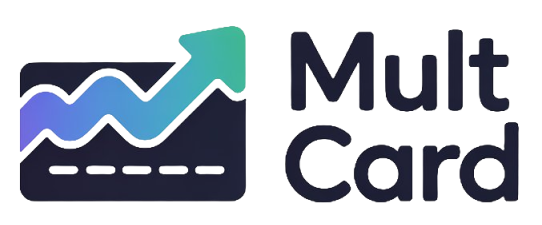Navigating the world of online loans can feel like trying to find your way through a dense fog. With countless lenders all promising the “best deal,” the most critical factor—the interest rate—often gets lost in a sea of confusing terms and fine print. The rate you secure directly impacts your monthly payment and the total cost of borrowing, potentially saving or costing you thousands over the life of the loan.
This guide is designed to cut through that fog. We’ll break down exactly what influences interest rates, show you how to compare offers like a pro, and provide actionable strategies to help you secure the most favorable terms possible. By understanding the mechanics behind the numbers, you can transform from a hopeful applicant into an empowered and informed borrower.
What Really Determines Your Loan’s Interest Rate?
Before you even start comparing lenders, it’s crucial to understand the factors they use to assess your application. Your interest rate isn’t an arbitrary number; it’s a calculated reflection of the risk the lender takes by giving you money. The lower the perceived risk, the lower your rate will be.
The Power of Your Credit Score
This is, without a doubt, the single most significant factor. Your credit score is a numerical representation of your creditworthiness, based on your history of managing debt. Lenders use it to predict how likely you are to repay your loan on time. A higher score demonstrates a track record of responsible borrowing, which translates to lower risk and, consequently, a lower interest rate. Conversely, a lower score signals higher risk, leading to higher rates to compensate the lender.
- Excellent Credit (740+): Access to the lowest advertised rates and best terms.
- Good Credit (670-739): Competitive rates, with many options available.
- Fair Credit (580-669): Higher rates, as you’re considered a greater risk.
- Poor Credit (Below 580): Limited options and often very high interest rates.
Debt-to-Income (DTI) Ratio: A Key Metric
Your DTI ratio compares your total monthly debt payments to your gross monthly income. Lenders use this figure to gauge your ability to handle new debt. A high DTI (typically over 43%) suggests that a significant portion of your income is already committed to other debts, making it harder to manage another monthly payment. A lower DTI indicates you have more disposable income, making you a more attractive and less risky borrower.
Loan Term and Amount
The length of the loan (the term) and the amount you borrow also play a role. Longer loan terms might offer lower monthly payments, but they often come with higher interest rates. This is because the longer you have the loan, the more time there is for your financial situation to change, increasing the risk for the lender. Similarly, larger loan amounts can sometimes command different rates than smaller ones, depending on the lender’s policies.
APR vs. Interest Rate: Unpacking the Numbers
It’s easy to confuse Annual Percentage Rate (APR) and interest rate, but they are not the same. Understanding the difference is vital for an accurate comparison.
- Interest Rate: This is simply the cost of borrowing the principal amount, expressed as a percentage.
- Annual Percentage Rate (APR): This is the true cost of the loan. It includes the interest rate PLUS any additional fees, such as origination fees, closing costs, or administrative charges.
Always compare loans using the APR. A loan with a lower interest rate but high fees could end up being more expensive than a loan with a slightly higher interest rate but no fees. The APR gives you a more complete, apples-to-apples picture of what you’ll actually pay.
A Comparative Look at Online Loan Providers
The online lending landscape is diverse. The three main types of institutions you’ll encounter are traditional banks, dedicated online lenders, and credit unions. Each has its own set of pros and cons.
| Lender Type | Typical Interest Rates | Speed & Convenience | Best For |
|---|---|---|---|
| Traditional Banks | Moderate to Low (often favor excellent credit) | Slower application and funding process | Existing customers with strong credit history. |
| Online-Only Lenders | Competitive; wider range for all credit types | Very fast, often same-day funding | Borrowers who need funds quickly and want to compare many options. |
| Credit Unions | Often the lowest rates, especially for members | Varies; can be slower than online lenders | Members looking for personal service and low rates. |
Step-by-Step Guide to Comparing Loan Offers Effectively
Once you have a few potential lenders in mind, it’s time to get specific offers and compare them systematically.
- Get Pre-Qualified with Multiple Lenders: Most online lenders offer a pre-qualification process that involves a “soft” credit check. This does not impact your credit score and gives you a realistic estimate of the rate and term you’ll be offered. Aim to get pre-qualified with at least 3-5 different lenders to have a solid basis for comparison.
- Create a Comparison Table: Don’t rely on memory. Organize the offers in a simple spreadsheet or table. Include columns for the Lender, Loan Amount, APR, Loan Term, Monthly Payment, and Total Repayment Cost. This will visually highlight the best financial option.
- Read the Fine Print: Fees and Penalties: Look beyond the APR. Are there prepayment penalties if you want to pay the loan off early? What are the late payment fees? These hidden costs can make a seemingly good offer much less attractive. A loan with no prepayment penalty offers greater flexibility.
Fixed vs. Variable Rates: Which is Right for You?
Most personal online loans come with fixed interest rates, but it’s good to know the difference. Your choice here affects the predictability of your payments.
- Fixed-Rate Loans: The interest rate is locked in for the entire life of the loan. Your monthly payment will never change. This is ideal for budgeting and provides stability, as you are protected from market fluctuations.
- Variable-Rate Loans: The interest rate is tied to a benchmark index and can change over time. It might start lower than a fixed rate, but it could increase, raising your monthly payment. These are riskier but could be beneficial if you plan to repay the loan quickly before rates rise. For a comprehensive overview of how interest rates work, you can review information on financial education sites.
Actionable Tips for Securing a Lower Interest Rate
You aren’t just a passive recipient of whatever rate is offered. You can take steps to improve your profile and secure better terms.
- Improve Your Credit Score: Before applying, check your credit report for errors and dispute them. Focus on making all payments on time and paying down credit card balances to lower your credit utilization ratio. Even a small increase in your FICO score can unlock better rates.
- Lower Your DTI: Pay down existing debts if possible before applying for a new loan. This demonstrates to lenders that you have the capacity to take on more financial responsibility.
- Choose a Shorter Term: If you can afford the higher monthly payment, a shorter loan term will almost always result in a lower interest rate and significantly less total interest paid.
- Consider a Co-signer: If your credit is fair or poor, applying with a co-signer who has excellent credit can help you qualify for a much lower rate.
Ultimately, finding the best loan is about more than just finding the lowest number. It’s about understanding the complete financial picture—the APR, the fees, the term, and the total cost. By doing your homework and systematically evaluating your choices, you can confidently select an option that fits your budget and helps you achieve your financial goals without overpaying.
Being an informed consumer is your most powerful tool. For an official and detailed breakdown of loan terms and consumer rights, the U.S. government provides invaluable resources. You can learn more by comparing interest rates on the best online loan options directly from the Consumer Financial Protection Bureau, ensuring you are fully prepared to make the best decision for your financial future.




